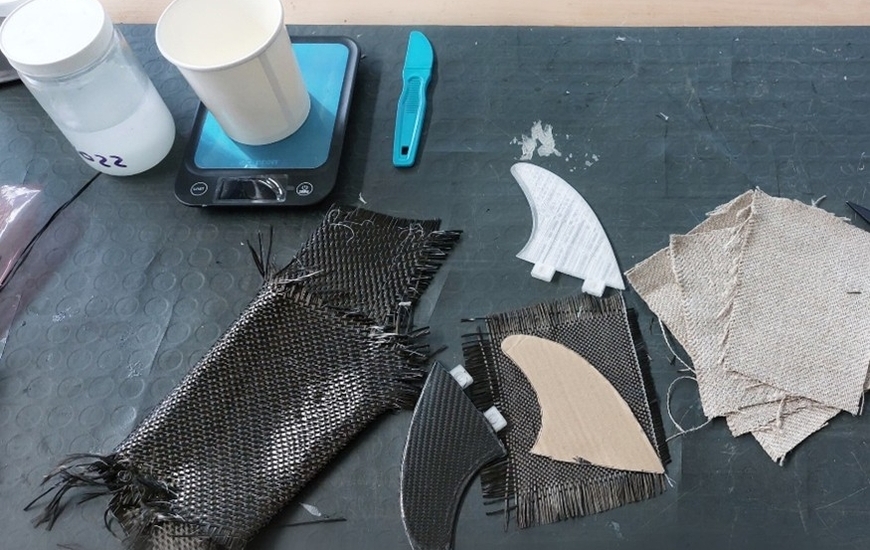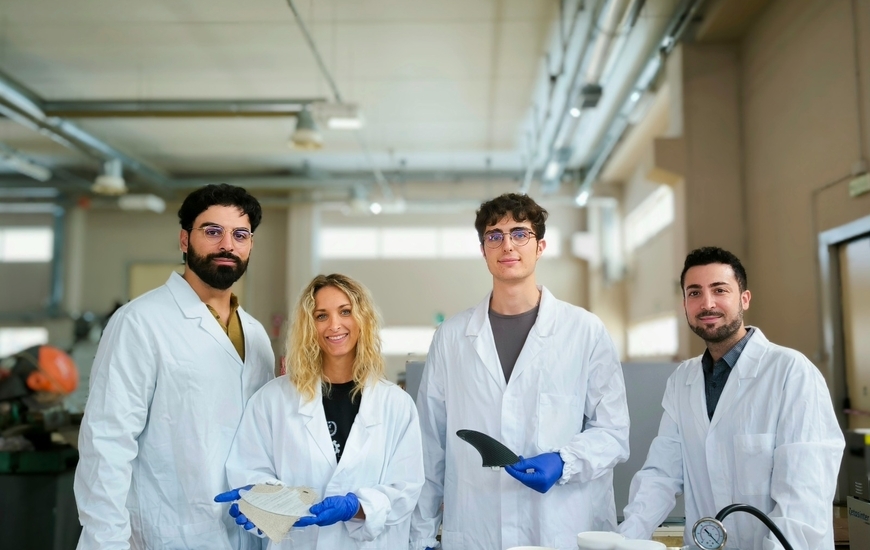Sports, passions, and... research. The following testimony, written by a student from the University of Catania, shows how the best ideas can sometimes emerge and develop from the activities we pursue in our daily lives.
by IVANA PICCOLO *
From the very beginning of my academic journey, I have nurtured a strong interest in composite materials and their sustainable applications. Alongside this, there is a passion that has accompanied me for years: surfing. The opportunity to combine study and passion took shape through a university project that allowed me to design and create an eco-friendly surfboard fin, leading me to discover the potential of engineering applied to biopolymers and environmental protection.
This work won first prize in the international "Ansys International Materials Selection Challenge 2024", which featured 80 teams from around the world and recognized the case study as the best among the seven finalists invited to Madrid.
During the second semester of the 2023/24 academic year, I took part in a lab activity at the Polymers and Composites Laboratory of the University of Catania (Italy), under the guidance of Professor Claudio Tosto, a researcher at DICAR, and with the supervision of Professor Gianluca Cicala. Together with two fellow Mechanical Engineering students (Calogero Virzì and Giovanni Sanfilippo), I worked on the design of an eco-friendly surfboard fin, combining simulation, advanced material selection, and manufacturing techniques including 3D printing of the core and hand lay-up with composite fibers.
The project originated from the idea of developing a technical object, such as a fin, that would combine mechanical performance with reduced environmental impact. For material selection, we used Ansys Granta EduPack, following the Ashby methodology, based on specific KPIs (low density, high Young’s modulus, UV and saltwater resistance, bio-based content). The hydrodynamic behavior of the fin was simulated using Ansys Fluent.
The final structure of the fin is a three-layer composite sandwich (carbon–flax–carbon), bonded with a recyclable bio-based epoxy resin and a 3D-printed polycarbonate core. The choice of a fully recyclable bio-resin system - made possible through the research carried out at the Polymers and Composites Laboratory - allows the fin to be disassembled at the end of its life, enabling recovery of both the composite materials and any sensors embedded in the structure, which are used to monitor surfing style and optimize the component redesign from a reuse and cyclical regeneration perspective.
In addition to the theoretical part, we physically built the prototype using hand lay-up techniques and autoclave post-curing, combining study with hands-on work. This project represented my first real-world experience with composites and lamination, providing me with both theoretical and practical foundations that I was later able to deepen and strengthen during my internship at Advanced Composites Solutions Srl, a leading company in the production of carbon fiber components.
* Master’s student in Chemical Engineering for Industrial Sustainability at the University of Catania
-

-
31 July 2025























